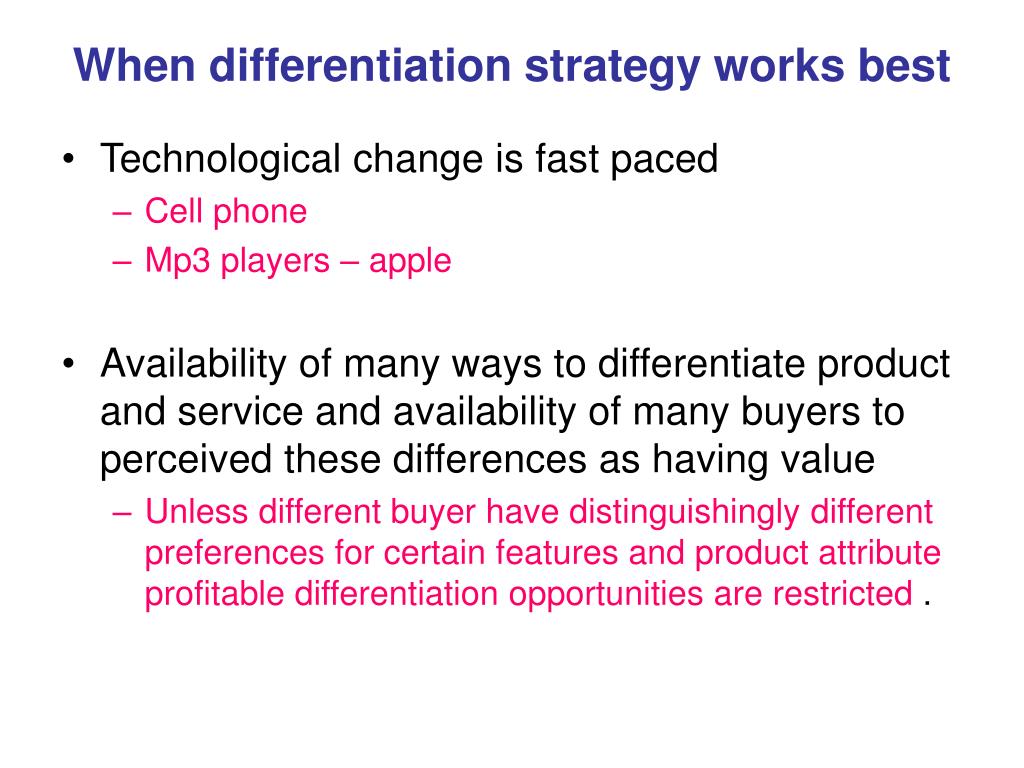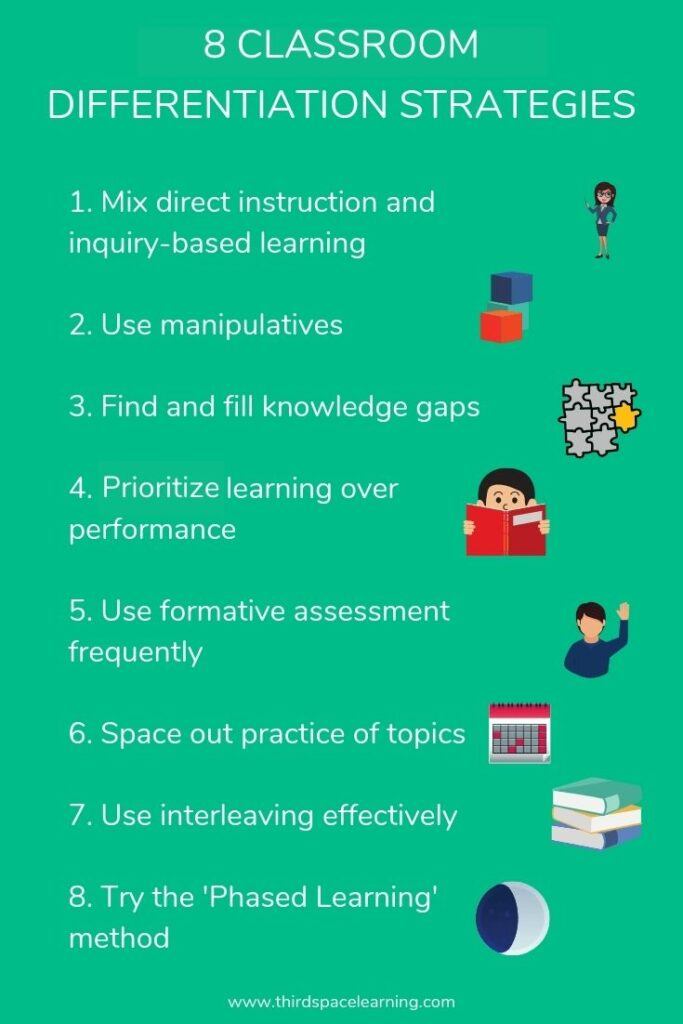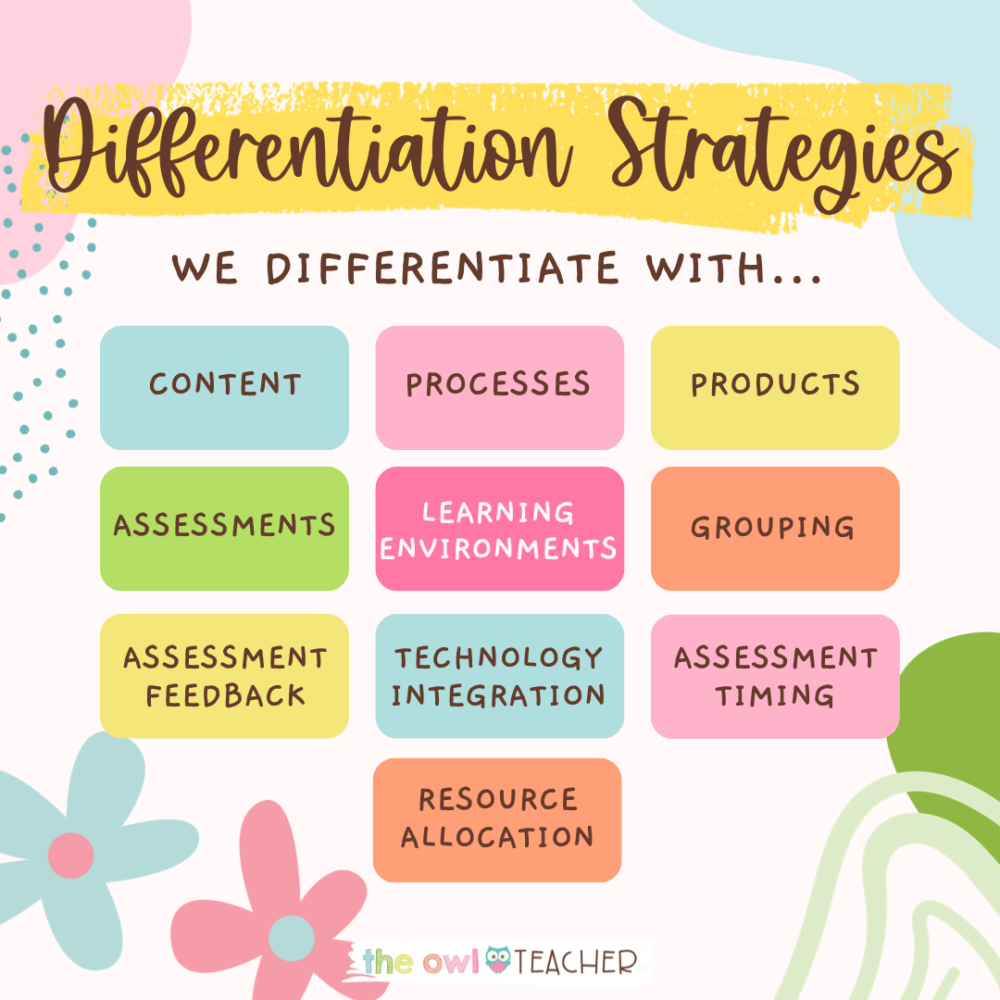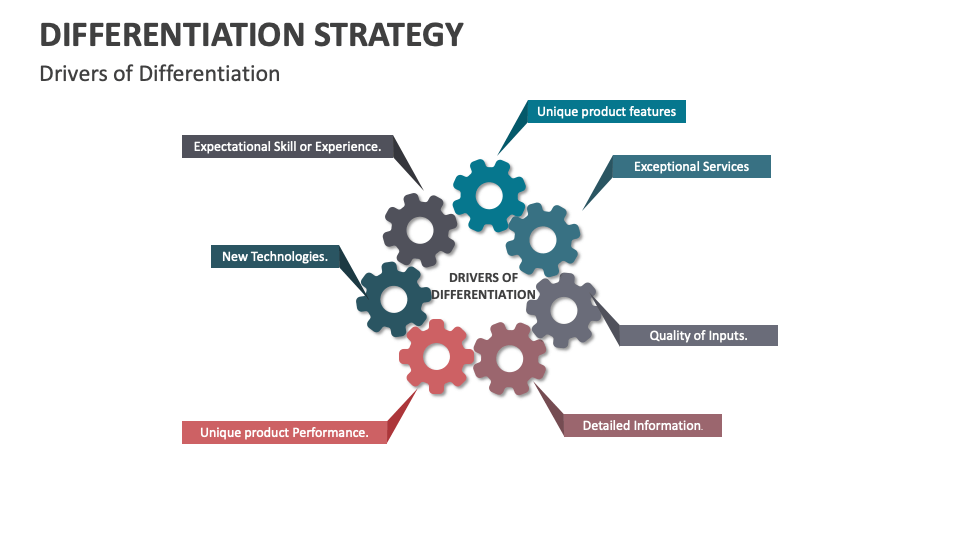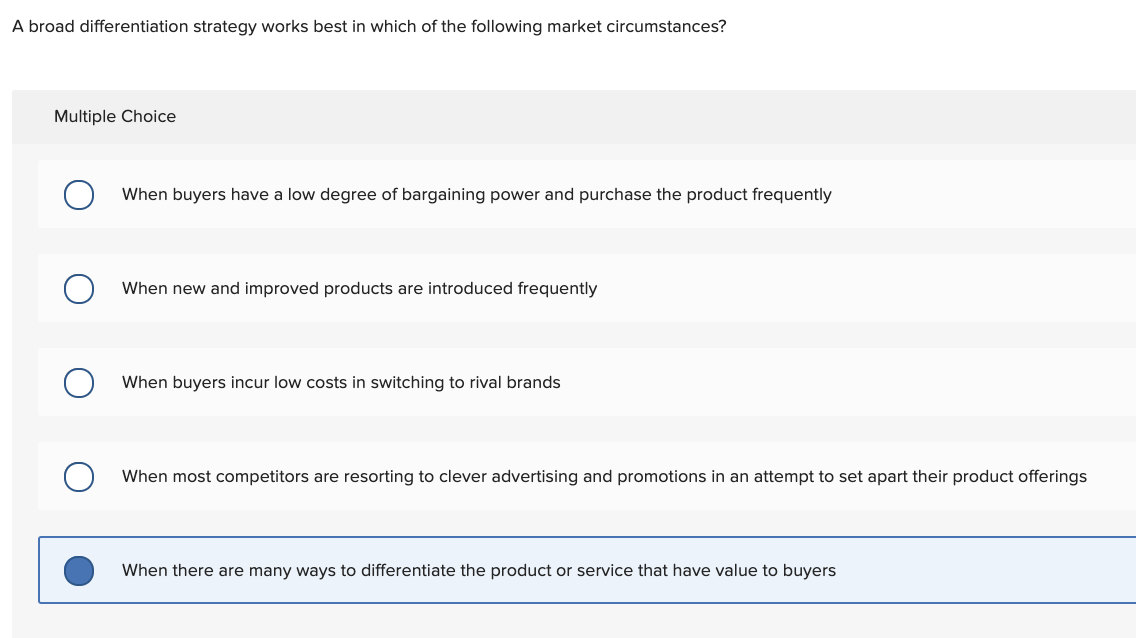A Differentiation Strategy Works Best When A

Imagine walking down a bustling street, a symphony of sights and sounds swirling around you. Every storefront competes for your attention, each trying to lure you in with promises of the best coffee, the trendiest clothes, or the most unforgettable experience. But one establishment stands out, not because it shouts the loudest, but because it whispers something unique, something that resonates with your specific needs and desires. This is the power of differentiation, a strategy that, when executed well, transforms a business from a mere commodity into a sought-after destination.
At its core, a differentiation strategy thrives when a company genuinely understands and caters to a specific, often underserved, segment of the market. This isn't simply about being different for the sake of it; it's about identifying a customer need or desire that competitors aren't adequately addressing and then tailoring your offerings to meet that need exceptionally well. Think of it as finding the perfect puzzle piece in a sea of generic shapes. The greater the congruence between your offering and the customer's needs, the more successful your differentiation strategy will be.
The Roots of Differentiation: A Historical Perspective
The concept of differentiation isn't new. Even in the early days of commerce, artisans and merchants recognized the value of offering something distinct.
However, the formalization of differentiation as a strategic business principle is often attributed to Michael Porter, who, in his seminal work, Competitive Advantage, outlined differentiation as one of the three generic strategies for achieving superior performance. Porter argued that by differentiating its products or services, a company could create customer loyalty and command premium prices.
Initially, differentiation focused heavily on product features and performance. Companies would strive to offer products that were faster, more durable, or more feature-rich than those of their competitors.
However, as markets became more saturated and consumers more discerning, differentiation evolved to encompass a broader range of factors, including customer service, brand image, and even the overall customer experience. This shift reflected a growing understanding that customers weren't just buying a product; they were buying a solution, a feeling, or an identity.
The Key: Understanding Your Customer Deeply
A successful differentiation strategy hinges on a deep understanding of your target audience. This goes beyond basic demographic data like age and income.
It requires understanding their values, their aspirations, their pain points, and their unmet needs. This understanding can be gleaned through various methods, including market research, customer surveys, social media listening, and even direct interaction with customers.
Consider, for example, a small, independent bookstore that differentiates itself from large chain stores by offering personalized recommendations, hosting author events, and creating a cozy, welcoming atmosphere. This bookstore isn't just selling books; it's selling a community, a connection to literature, and a personalized shopping experience. That's what the big chains lack and what their target customers specifically look for.
They’ve identified a specific customer segment - those who value personalized service and community - and tailored their offerings to meet the need effectively. According to a 2023 report by the American Booksellers Association, independent bookstores have seen steady growth in recent years, even as the overall book market has remained relatively flat, showcasing the effectiveness of this differentiation strategy.
Beyond Products: Differentiating Through Service and Experience
Differentiation isn't limited to product features; it can also be achieved through exceptional customer service, a unique brand experience, or a commitment to specific values.
For instance, a luxury hotel might differentiate itself by providing highly personalized concierge services, offering bespoke experiences tailored to each guest's preferences, and cultivating a reputation for unparalleled attention to detail.
Companies can also differentiate themselves through their commitment to social responsibility.
A clothing brand that uses sustainable materials, ethical manufacturing practices, and donates a portion of its profits to environmental causes can attract customers who value sustainability and ethical consumption. This approach not only differentiates the brand but also aligns it with a growing consumer trend towards conscious consumerism. Data from Nielsen's 2022 Global Sustainability Report shows that consumers are increasingly willing to pay a premium for products from companies committed to social and environmental responsibility.
Common Pitfalls to Avoid
While a differentiation strategy can be highly effective, it's not without its challenges. One common pitfall is attempting to differentiate on too many factors simultaneously.
This can dilute the brand's message and make it difficult for customers to understand what makes the company truly unique. It's often more effective to focus on one or two key differentiators and excel in those areas.
Another challenge is maintaining differentiation over time. Competitors will inevitably try to copy or improve upon successful differentiation strategies.
To stay ahead of the curve, companies must continuously innovate and evolve their offerings. This requires ongoing market research, customer feedback, and a willingness to adapt to changing customer needs.
The Future of Differentiation: Personalization and Technology
Looking ahead, the future of differentiation is likely to be driven by personalization and technology.
Advances in data analytics, artificial intelligence, and automation are enabling companies to create increasingly personalized experiences for their customers.
Imagine a retailer that uses AI to analyze a customer's past purchases, browsing history, and social media activity to recommend products tailored to their specific tastes and preferences. This level of personalization can create a stronger connection with the customer and foster brand loyalty. According to a 2023 report by McKinsey, companies that excel at personalization generate 40% more revenue than those that don't.
Technology also enables companies to offer more convenient and seamless customer experiences. From mobile ordering and online scheduling to personalized customer service chatbots, technology can streamline interactions and make it easier for customers to engage with the brand.
Ultimately, a differentiation strategy works best when it's rooted in a genuine understanding of customer needs and a commitment to delivering exceptional value. It's not about being different for the sake of it; it's about creating something that resonates with a specific audience and solves their problems in a unique and meaningful way.
In today's crowded marketplace, differentiation is no longer a luxury; it's a necessity for survival and success.
As we navigate the ever-evolving business landscape, the ability to identify and cater to niche markets, anticipate customer needs, and leverage technology for enhanced personalization will become increasingly critical. Those companies that embrace this philosophy will not only survive but thrive, building lasting relationships with their customers and creating a competitive advantage that stands the test of time. It’s about being the whisper that cuts through the noise, the solution that fits perfectly, the brand that truly understands.







